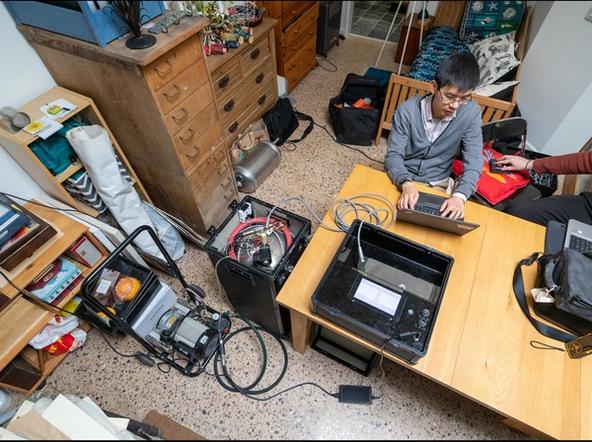Case Study
Pulse air leakage testing in very air tight Passivhaus properties
We are pleased to publish the results from using Pulse to test the air leakage of very air-tight dwellings, such as Passivhaus new builds and EnerPHit retrofits.

Build Test Solutions have conducted this work in a short space of time in response to the Government Future Homes Standard consultation which proposes a lower limit of 1.5 m3/h/m2 @50Pa on the Pulse technique. We consider it unnecessary for regulations to set such operating limits and believe that the air tightness testing community is already well versed in selecting the right equipment for the job at hand. Passivhaus properties with airtightness levels often considerably lower than 0.5 m3/h/m2 @50Pa require a specialist low flow fan, window mounted in a fixed panel and fully sealed, with a much greater number of readings taken across both pressurisation and depressurisation in order to keep measurement uncertainty to a minimum.
In this report, we use the Pulse device to measure air leakage in 11 properties with measured airtightness ranging from 0.29 m3/h/m2 @50Pa to 1.19 m3/h/m2 @50Pa. The average difference between the two methods at 4Pa is 0.0003 m3/h/m2 @4Pa (11%) and 0.12 m3/h/m2 @50Pa (18%) at 50Pa when using the Power Law as a means of extrapolation. Our arising recommendations to UK Government are as follows:
- Pulse can measure very airtight dwellings just as reliably as the incumbent blower door fan technique and setting a lower operating limit of 1.5 m3/h/m2 @50Pa is not necessary.
- Contrary to the previous BTS field trial-based recommendation of using a fixed conversion factor of 5.3 to convert a Pulse 4Pa result to a 50Pa air leakage value, our testing of very air-tight dwellings illustrates how the use of such a single number is not reliable across the full spectrum of buildings. The same applies to the divide by 20 rule applied to all blower door fan results as a means to infer infiltration rates, as previously reported. Our recommendation having now conducted these additional tests is that the power law equation as detailed in the proposed updated TM23 document is used for all extrapolation purposes.
- Measurement of very airtight buildings is fraught with challenges, regardless of the measurement method being used. As ATTMA has already demonstrated with its TSL4 guidance document, expert preparation, specialist equipment and perfect conditions are all required in order to get a remotely reasonable assessment of air leakage from the technologies available on the market today. This, we believe, should be recognised by UK Government by continuing to support innovation in this field and by encouraging the development of further guidance and best practice.
To read our full report please click here.
Pulse has now been tested alongside the blower door fan technique in over 120 different homes. To view and download our previous field trial studies including the 3rd party verification work carried out by BRE, please click here.



